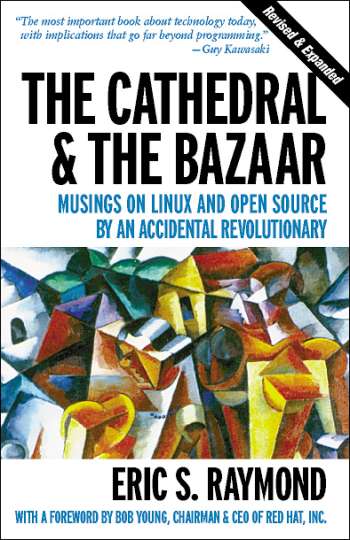The open source model can play an important role in innovation, but know its limitations.

Ten years ago, on May 22, 1997, a little-known software programmer from Pennsylvania named Eric Raymond presented a paper at a technology conference in Würzburg, Germany. Titled “The Cathedral and the Bazaar,” the paper caused an immediate stir, and its renown has only grown in the years since. It is now widely considered one of the seminal documents in the history of the software industry. (...)
Peer production is still a new phenomenon and will continue to evolve. Nevertheless, its most prominent examples are now mature enough that we can begin to draw from them some practical lessons for executives and entrepreneurs looking to the open source model as a means of strengthening the innovativeness of their organizations.
The bottom line is that peer production has valuable but limited applications. It can be a powerful tool, but it is no panacea. It’s a great way to find and fix problems, to collect and categorize information, or to perform any other time-consuming task that can be sped up by having lots of people with diverse perspectives working in parallel. It can also have the important added benefit of engaging customers in your innovation process, which not only allows their insights to be harnessed but also may increase their loyalty to your company.
But if peer production is a good way to mine the raw material for innovation, it doesn’t seem well suited to shaping that material into a final product. That’s a task that is still best done in the closed quarters of a cathedral, where a relatively small and formally organized group of talented professionals can collaborate closely in perfecting the fit and finish of a product. Involving a crowd in this work won’t speed it up; it will just bring delays and confusion.
The open source model is also unlikely to produce the original ideas that inspire and guide the greatest innovation efforts. That remains the realm of the individual. Raymond was clear on that point when, toward the end of his paper, he examined some of the “necessary preconditions” for the bazaar model of production. “It’s fairly clear,” he wrote, “that one cannot code from the ground up in bazaar style. One can test, debug and improve in bazaar style, but it would be very hard to originate a project in bazaar mode.” In a recent e-mail to me, he was even blunter. “The individual wizard,” he wrote, “is where successful bazaar projects generally start.”
Matt Asay, a software executive with long experience in the open source movement, agrees. “All open source projects — without exception — are started by one or two people and…have a core development group of fewer than 15 developers,” he says. “The most you can hope for [from the broader set of contributors] is bug fixes.” Asay warns that trying to expand the core decision-making group to include more of the “community” can backfire, as the resulting decision-by-committee approach tends to produce “stale, conservative code.” In other words, keep the bazaar out of the cathedral.
So if you’re looking to bolster your company’s creativity, you should by all means look for opportunities to harness the power of the crowd. Just don’t expect the masses to take the place of the lone wizard or the band of mages. The greatest breakthroughs will always begin, to quote Eric Raymond once more, with “one good idea in one person’s head,” and the greatest products will always reach perfection through the concerted efforts of a highly skilled team.
